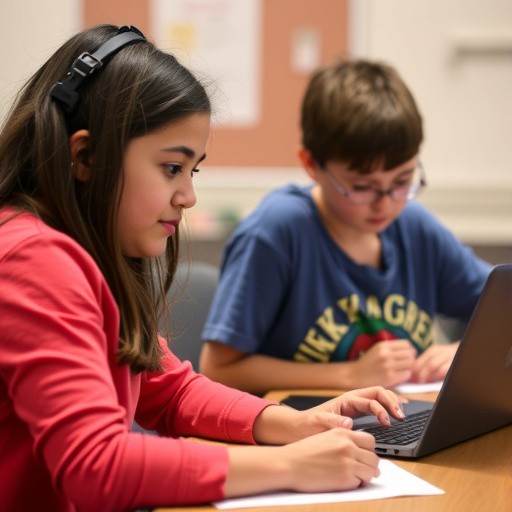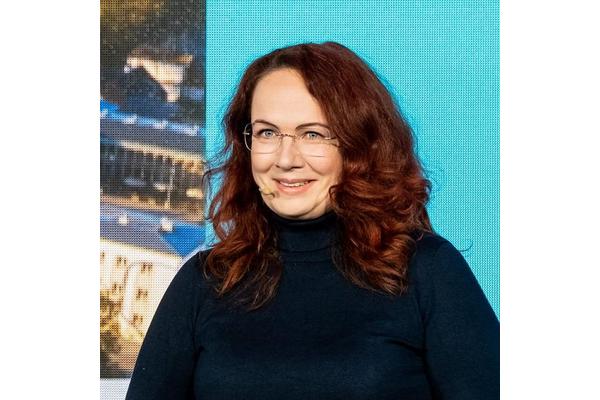Students Demand Real-World Math Applications in RAND’s First Youth Survey
Students Demand Real-World Math Applications in RAND’s First Youth Survey

A recent groundbreaking survey conducted by RAND Corporation’s newly established American Youth Panel (AYP) reveals a troubling trend: a significant portion of middle and high school students are increasingly disengaged from mathematics. According to the initial findings from this panel, nearly half of surveyed students reported experiencing a loss of interest in math approximately half or more of the time during their classes, while three-quarters admitted to feeling disinterested for some portion of their math lessons. This consistent disengagement raises serious concerns for educators and policymakers focused on STEM education and youth academic development.
The American Youth Panel, launched in 2024 to complement RAND’s long-standing American Life Panel, surveyed close to 2,000 young individuals aged between 12 and 21. Their responses form a nationally representative data set, meticulously collected through digital communication methods like email and text messaging, to capture the authentic attitudes, behaviors, and academic experiences of contemporary youths. This methodological innovation enables timely, relevant insights into how students are engaging with core subjects such as mathematics amid rapid societal and instructional changes.
Remarkably, the loss of enthusiasm for math cut across demographic categories, with no significant variation observed in gender or racial and ethnic groups. This uniformity suggests that the erosion of interest is a systemic issue rather than one confined to specific populations. Such findings implicate educational environments, curriculum approaches, and the general culture around mathematics learning as factors that require urgent scrutiny and reform.
Another striking revelation from the survey is that only 30% of students in middle and high schools consider themselves “math people.” For those who do identify this way, their positive self-perception generally traces back to experiences in elementary school, underscoring the crucial role early education plays in shaping students’ mathematical identities. This insight places a spotlight on elementary school educators, highlighting their potential influence on students’ long-term engagement with math, which could have lasting ramifications for STEM workforce development.
Heather L. Schwartz, vice president and director of RAND Education and Labor, emphasizes that boredom — often overlooked in the conversation about academic achievement — is a fundamental barrier to post-pandemic recovery in math proficiency. The persistence of boredom during math lessons signals a need for educators to rethink and revitalize how mathematics is taught. Student engagement is not merely a peripheral concern; it is an essential driver for improved academic outcomes and sustained interest in STEM disciplines.
The survey further delved into students’ preferences for the format of math instruction, revealing a nuanced attitude towards technology integration. While one might assume that digital tools and online activities would energize students in today’s tech-centric environment, the data suggests otherwise. Many youths reported a desire for fewer online math activities in favor of more face-to-face instruction that incorporates real-world applications. This preference challenges prevailing assumptions about edtech and invites a reevaluation of how technology is blended with traditional teaching methods.
Robert Bozick, a senior research scientist at RAND, advocates for a balanced pedagogical approach that leverages both face-to-face interactions with teachers and carefully curated offline and online activities. He argues that this mixed strategy, coupled with greater emphasis on real-world math applications, could significantly enhance student motivation. The integration of practical, tangible problems into math curricula might bridge the gap between abstract concepts and students’ lived experiences, fostering deeper cognitive engagement and relevance.
Exposure to applied mathematics connects theoretical knowledge to real-life contexts, providing intrinsic motivation by revealing the utility of math beyond the classroom. This approach aligns with cognitive science research, which posits that meaningful learning occurs when students perceive subject matter as purposeful and applicable. Curricular reforms that embed problem-solving in financial literacy, engineering, or technology could spark renewed interest and combat the pervasive disengagement RAND’s survey has identified.
The longitudinal nature of the RAND study will allow researchers and educators to track changes in math attitudes over time as new instructional strategies are implemented, and post-pandemic educational landscapes evolve. This dynamic monitoring is critical because student engagement is influenced by multiple factors, including instructional quality, classroom environment, socio-emotional support, and broader societal trends affecting youth.
RAND’s establishment of the American Youth Panel responds to an important research gap — the need for timely, representative data on the attitudes and experiences of young people transitioning to adulthood. Unlike many large-scale surveys that focus on adults or aggregate data at broad levels, AYP hones in on youth voices with fine-grained precision, enabling targeted policy interventions and educational innovations precisely where they matter most.
The implications of this research are far-reaching. Persistent disinterest in mathematics could have cascading effects on students’ academic trajectories, limiting access to higher education in STEM fields and constraining workforce pipelines critical to technological advancement and economic competitiveness. Therefore, addressing boredom and disengagement is not merely an educational challenge but a national imperative requiring coordinated efforts among teachers, administrators, policymakers, and parents.
The RAND survey also sheds light on the complex relationship between educational technology and student engagement. As digital learning tools become more prevalent in classrooms, understanding the conditions under which they help or hinder learning is essential. The survey’s findings caution against uncritical adoption of online math activities, urging a pedagogically sound integration that complements, rather than replaces, human interaction and experiential learning.
In summary, this first-of-its-kind research by RAND’s American Youth Panel presents a compelling narrative on the state of math education among U.S. youths. It calls for urgent, coordinated interventions focused on enhancing engagement through diverse instructional modalities and contextualized content. By acknowledging and addressing the widespread boredom reported by students, educators have an opportunity to revitalize math learning and better prepare young people for the demands of the future.
Subject of Research: Student Engagement and Attitudes Toward Mathematics in U.S. Middle and High Schools
Article Title: Losing Interest in Math: Findings from the American Youth Panel
News Publication Date: 2024
Web References:
- https://www.rand.org/pubs/research_reports/RRA3988-1.html
- https://www.rand.org/education-and-labor/survey-panels/ayp.html
References:
- Diliberti, M.K., Ohls, S., Schwartz, H.L., & Bozick, R. (2024). Losing Interest in Math: Findings from the American Youth Panel. RAND Corporation.
Keywords: Education, Mathematics, Students, Education Policy, Education Technology
Renewal and Collective Iḥyā’ in Islamic Thought
Next PostThree Hebrew University Scientists Awarded Prestigious ERC Advanced Grants for Groundbreaking Research
Unraveling the Factors Behind Subjective Well-Being Amidst China’s Rapid Urbanization







